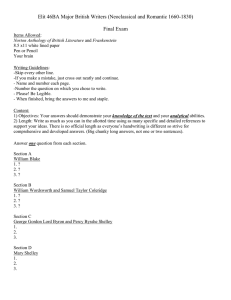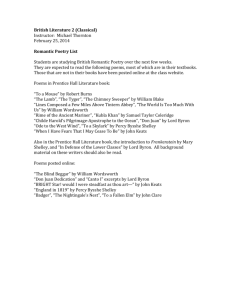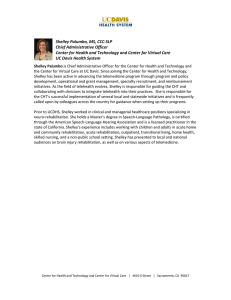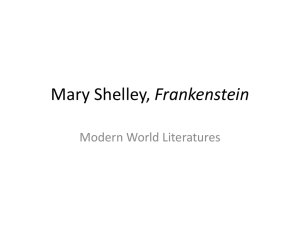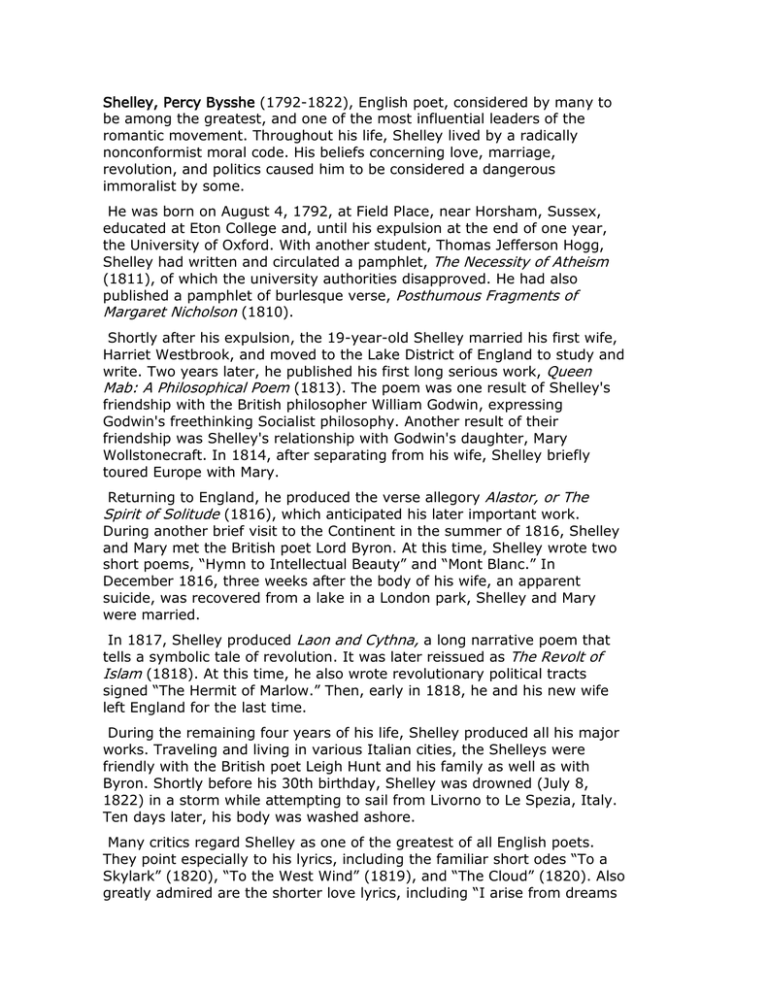
Shelley, Percy Bysshe (1792-1822), English poet, considered by many to
be among the greatest, and one of the most influential leaders of the
romantic movement. Throughout his life, Shelley lived by a radically
nonconformist moral code. His beliefs concerning love, marriage,
revolution, and politics caused him to be considered a dangerous
immoralist by some.
He was born on August 4, 1792, at Field Place, near Horsham, Sussex,
educated at Eton College and, until his expulsion at the end of one year,
the University of Oxford. With another student, Thomas Jefferson Hogg,
Shelley had written and circulated a pamphlet, The Necessity of Atheism
(1811), of which the university authorities disapproved. He had also
published a pamphlet of burlesque verse, Posthumous Fragments of
Margaret Nicholson (1810).
Shortly after his expulsion, the 19-year-old Shelley married his first wife,
Harriet Westbrook, and moved to the Lake District of England to study and
write. Two years later, he published his first long serious work, Queen
Mab: A Philosophical Poem (1813). The poem was one result of Shelley's
friendship with the British philosopher William Godwin, expressing
Godwin's freethinking Socialist philosophy. Another result of their
friendship was Shelley's relationship with Godwin's daughter, Mary
Wollstonecraft. In 1814, after separating from his wife, Shelley briefly
toured Europe with Mary.
Returning to England, he produced the verse allegory Alastor, or The
Spirit of Solitude (1816), which anticipated his later important work.
During another brief visit to the Continent in the summer of 1816, Shelley
and Mary met the British poet Lord Byron. At this time, Shelley wrote two
short poems, “Hymn to Intellectual Beauty” and “Mont Blanc.” In
December 1816, three weeks after the body of his wife, an apparent
suicide, was recovered from a lake in a London park, Shelley and Mary
were married.
In 1817, Shelley produced Laon and Cythna, a long narrative poem that
tells a symbolic tale of revolution. It was later reissued as The Revolt of
Islam (1818). At this time, he also wrote revolutionary political tracts
signed “The Hermit of Marlow.” Then, early in 1818, he and his new wife
left England for the last time.
During the remaining four years of his life, Shelley produced all his major
works. Traveling and living in various Italian cities, the Shelleys were
friendly with the British poet Leigh Hunt and his family as well as with
Byron. Shortly before his 30th birthday, Shelley was drowned (July 8,
1822) in a storm while attempting to sail from Livorno to Le Spezia, Italy.
Ten days later, his body was washed ashore.
Many critics regard Shelley as one of the greatest of all English poets.
They point especially to his lyrics, including the familiar short odes “To a
Skylark” (1820), “To the West Wind” (1819), and “The Cloud” (1820). Also
greatly admired are the shorter love lyrics, including “I arise from dreams
of thee” and “To Constantia singing”; the sonnet “Ozymandias” (1818);
and “Adonais” (1821), an elegy for the British poet John Keats, written in
formal Spenserian stanzas. The effortless lyricism of these works is also
evident in Shelley's verse dramas, The Cenci (1819) and Prometheus
Unbound (1820); these remain, however, profound but unproduceable
closet dramas. His prose, including a translation (1818) of The Symposium
by Plato and the unfinished critical work A Defence of Poetry (written
1821; published 1840), is equally skillful. Other critics, particularly
antiromanticists who object to the prettiness and sentimentality of much of
his work, maintain that Shelley was not as influential as the other British
romantic poets Byron, Keats, or William Wordsworth.1
1"Shelley, Percy Bysshe."Microsoft® Encarta® Encyclopedia 2001. © 1993-2000 Microsoft
Corporation. All rights reserved.

